Miscellaneous
Endovascular
Visceral ischemia with aortic stenosis - Our daily dilemma: Open or Endo?
Imagine treating a 68-year-old woman with visceral ischemia, complicated by CHF, HTN, obesity, and dyslipidemia. She suffers from postprandial abdominal pain, unintentional weight loss, and has a history of claudication with a bifurcated graft implantation. Explore potential therapeutic approaches for this challenging case!
Part I - Case presentation
A 68-year-old woman with visceral ischemia
- Risk factors: congestive heart failure (CHF), arterial hypertension (HTN), obesity, dyslipidemia
- Postprandial abdominal pain increasing 15 minutes after eating
- Unintentional weight loss
- History of claudication and implantation of a bifurcated graft
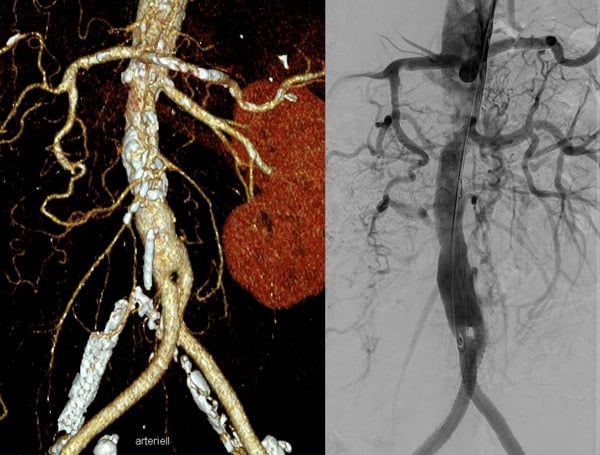
Part II - Our treatment
We decided to opt for endovascular treatment of the coral reef aorta
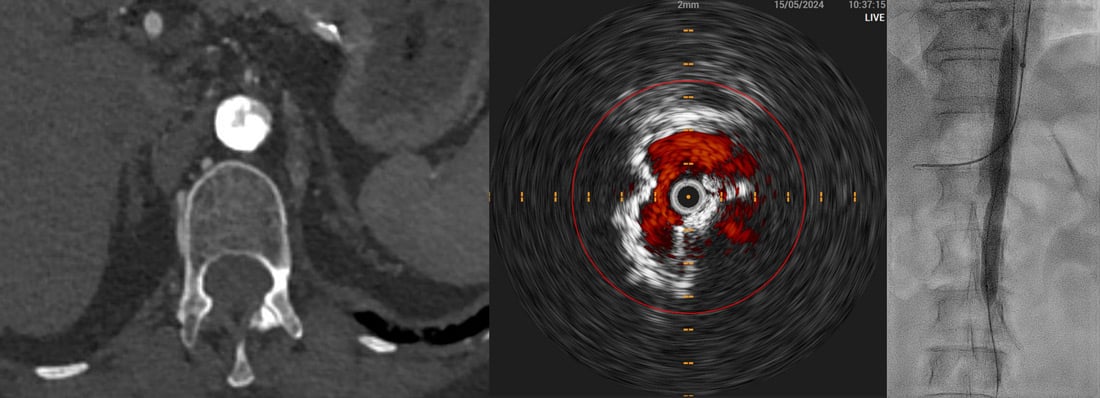
Shockwave lithotripsy of the severe calcified visceral aorta
Pre-operative IVUS
Postoperative IVUS
→ After IVL, we saw an increased movement of the aortic wall, synchronized with the cardiac cycle
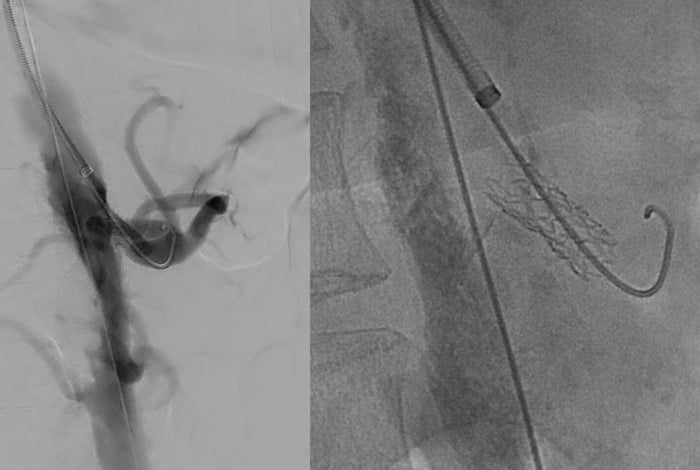
Stenting of the aorta (BMS, 12 x 60 mm GPS) and chimney for the celiac artery (7 x 22 mm, Advanta V12)
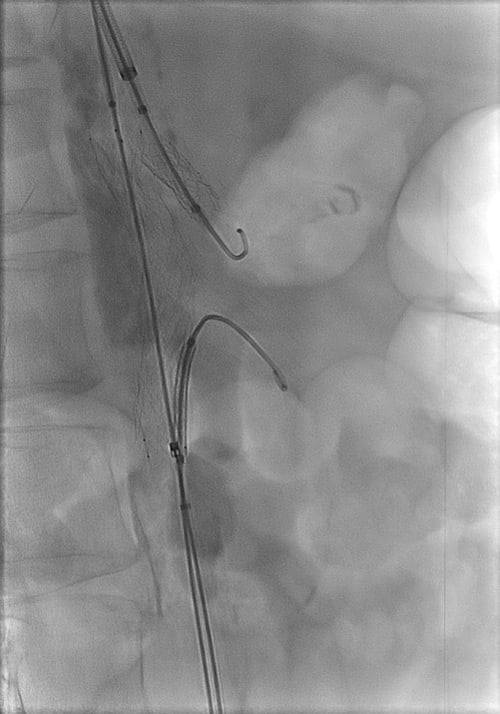
Periscope for the left renal artery (7 x 29 VBX) and kissing-ballooning (12 x 14 mm PTA of the aorta)

IVUS: lumen gain of the aorta
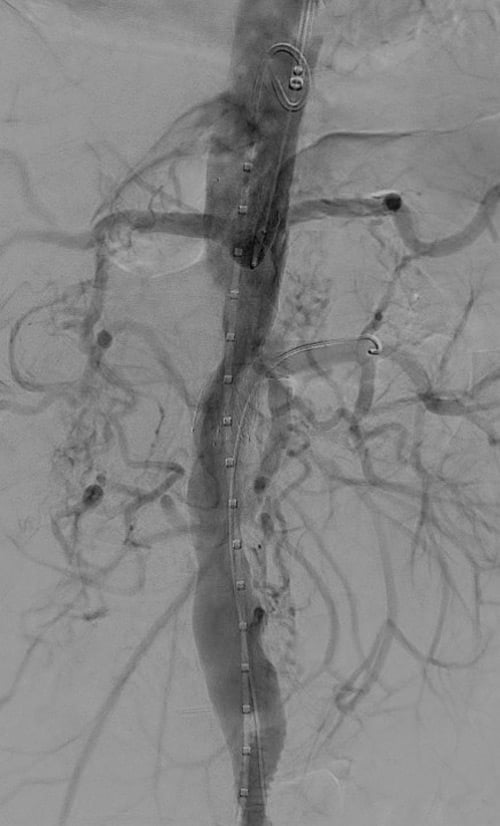
Angio: retrograde filling of SMA. Good patency of aorta, celiac and renal artery
Summary
- A patient with visceral ischemia and coral-reef aorta was successfully treated by endovascular approach.
- IVUS showed the increased compliance of the aortic wall after lithotripsy and lumen gain after using a bare metal stent.
- Patient's state of health at the end of the treatment was excellent.
- The three-month follow-up will include clinical examination, gain in weight, and duplex US.
Get the latest clinical cases and breaking news delivered straight to your inbox!



